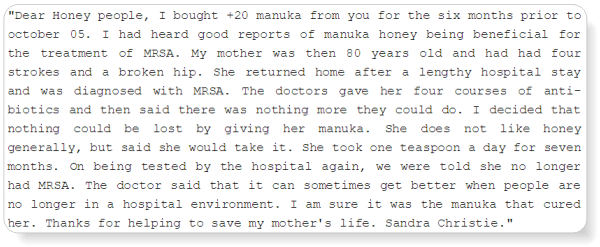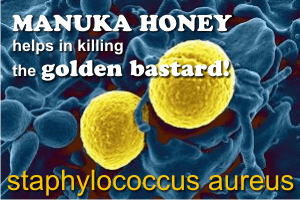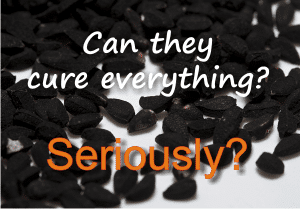In the previous article Is manuka honey a natural treatment for MRSA? Is it the best? I was saying that despite all the marketing made to consider manuka honey our solution for the superbugs, especially those grown in hospitals, manuka honey has not yet proved to be so miraculous for the internal infections.
What is MRSA and MSSA?
MRSA = methicillin resistant Staphylococcus aureus,
MSSA = methicillin sensitive Staphylococcus aureus
Staphylococcus is one of the five most common causes of infections after injury or surgery. It affects around 500,000 patients in American hospitals annually.
It can be transmitted easily through air droplets or aerosol. When an infected person coughs or sneezes, he or she releases numerous small droplets of saliva that remain suspended in air. These contain the bacteria and can infect others.
1/3 of all healthy population is having this bacteria.
It can be in our noses, pharynx and on the skin. But not affecting us. In normal healthy and immunocompentent person, S. aureus colonization of the skin, intestinal tract, or nasopharynx does not lead to any symptoms or disease.
One disease never comes alone!
As Dr Ananya Mandal explains in News-medical.net: “When S. aureus is isolated from an abscess or boil or other skin lesion, it is usually due to its secondary invasion of a wound rather than the primary cause of disease. S. aureus may similarly be isolated from abscesses, breast absecesses or mastitis, dermatitis or skin infections and genital tract infections.
In animals and humans that are immunocompromised or immunodeficient, this bacteria may be life threatening. It may lead to pyogenic (abscessing) infections of the skin, eyes and genital tract.”
So, it starts from here. From minor skin infections, such as pimples or impetigo and than lead to lung infections or pneumonia, brain infections or meningitis, bone infections or osteomyelitis, heart infections or endocarditis, generalized life threatening blood infections or toxic shock syndrome (TSS), bacteremia and septicaemia.
Really, really scaring stuff in the inside of our body.
So, we might be among those 30% of the healthy population carrying it. But God forbids to get a skin infection, the bacteria can find there its perfect place to grow, be strong and devour us completely.
Some of them can be treated with methicillin but some of them cannot.
Can manuka honey kill Staphylococcus Aureus?
Manuka honey seems to be able to kill it, no matter the strain. The tests done by now show that:
MSSA (Methicillin Susceptible Staphylococcus Aureus) was killed
100% – on a single bacteria.
BUT ONLY 82% – on biofilms (which was less than the action of Sidr honey, which had 63%)
MRSA (Methicillin Resistant Staphylococcus Aureus) was killed:
100% – on a single bacteria.
BUT ONLY 63% – on biofilms (less than with Sidr honey, which had 73%)
Clinical trials have also found this type of honey can effectively eradicate more than 250 clinical strains of bacteria, including resistant varieties such as: MRSA (methicillin resistant Staphylococcus aureus), MSSA (methicillin sensitive Staphylococcus aureus) and VRE (vancomycin-resistant enterococci).
At least considering the natural products, manuka honey is THE BEST to treat wounds, burns, skin infections (the detailed article).
But when it comes to internal problems, things are not so clear.
Does manuka honey kill Staphylococcus Aureus from inside our bodies?
Things are different after digestion.
In 2015 scientists have researched manuka’s activity after in vitro simulated digestion.
The article Antistaphylococcal activity and metabolite profiling of manuka honey (Leptospermum scoparium L.) after in vitro simulated digestion, by Luisa Mannina et al., published on 18 Feb 2016, studied the activity of manuka honey against MSSA (Methicillin Susceptible Staphylococcus Aureus) and MRSA (Methicillin Resistant Staphylococcus Aureus) before and after (in vitro) gastric and gastroduodenal digestions.
Here’s what the results said:
Before digestion:
– Undigested manuka honey showed antibacterial activity against all the tested strains – as previously proved by other researchers, with the result found above (on single bacteria and on biofilms).
After digestion:
– the gastric digestion sample showed no activity against S. aureus,
– the gastric duodenal digestion sample showed some activity against S. aureus, but slightly reduced in comparison with the undigested sample.
Also read: Is manuka honey a natural treatment for MRSA? Is it the best?
Is MGO the antibacterial factor in manuka honey?
It is considered that the antibacterial activity of manuka honey is atributed to the high content of methylglyoxal (MGO). To see if this is true or not, this substance alone was tested in the same in vitro simulated gastric and gastroduodenal digestions.
Seems that after digestion, MGO alone had higher antibacterial activity than in manuka honey samples.
These results showed that the antistaphylococcal activity registered after digestion cannot be ascribed to MGO.
Because after digestion this is what happens:
1. the level of MGO decreases
2. the contents of aromatic compounds, such as leptosin and methyl syringate, markers of manuka honey, were stable under gastric and gastroduodenal digestions, (which is another reason for buying real, tested manuka honey.)
3. the levels of acetic and lactic acids increase, especially after gastroduodenal digestion, and were 1.5 and 2.8 times higher in gastroduodenal digested manuka honey than in undigested manuka honey.
To understand all these, researchers performed metabolite analysis, carried out using an explorative untargeted NMR-based approach and a targeted RP-HPLC-PAD-ESI-MSn analysis focused on bio-active substances, was used to highlight the chemical modifications occurring from digestion.
The study’s conclusion: The results obtained from chemical analysis provide at least a partial explanation of the registered antibacterial activity observed after gastroduodenal digestion.
It was considered that the risk of bacteria developing resistance to honey will be low if high concentration of honey are maintain.
What should we understand from here?
1. That when buying manuka honey the content of MGO is important, as it decreases anyway during digestion. But more important is the UMF grade.
(It is true that MGO has a higher antibacterial activity on its own, with or without digestive conditions, but when it’s inside honey its activity decreases. On the other hand, I would say this is good news, because it is not proven yet that such a high content of MGO, even in honey composition, is not harmful to our body. Please read: Is Manuka Honey safe to eat?)
To know the differences from UMF and MGO as they appear on the honey jars, please read the article: I want to buy manuka honey. What is UMF 16+, MGO 400+, Active?

2. Manuka honey is not yet proved to completely kill MRSA and MSSA inside our bodies. It does show antibacterial activity against them. Though lots of people said it worked for them, science is still in the research phase. And we need to keep an objective attitude.
On the other hand, if pharmaceutical drugs don’t work, manuka honey has no side-effects (though it does have some restrictions – diabetics for example) and the situation is bad, I think we could give manuka honey a try, don’t you?
Besides, even if it doesn’t completely kill them, at least it does kill lots of them and we can keep the situation under control.
3. When buying manuka honey we need to make sure it is real manuka honey, with the necessary content of manuka in it, so it can be considered monofloral manuka honey, and not contaminated with toxic substances. Here are what tests should the producers do to authenticate real manuka honey.
Be very careful on scams. Not all manuka honey has MGO, not all expensive manuka honey is genuine manuka honey. Until you get a trustful supplier you can always trust Comvita.
4. It is very important to heal the skin before the bacteria destroys ourselves from inside. For this it is advisable to use raw Manuka honey, or the medical grade honey especially made out of it, Medihoney. Here are 2 articles talking about it: Medihoney dressings – the best wound care dressing products and Medihoney wound dressing review.
 source: http://www.newzealandhoneyshop.co.uk/manuka-honey/comvita-umf-20.html
source: http://www.newzealandhoneyshop.co.uk/manuka-honey/comvita-umf-20.html
Only manuka honey is good for skin infections?
No, not only manuka honey. But it is considered the best. Nevertheless, another product made of honey is also very successful in killing the bacteria: Revamil.
In lab tests Revanil killed Staphylococcus aureus, Staphylococcus epidermidis, Enterococcus faecium, Escherichia coli, Pseudomonas aeruginosa, Enterobacter cloacae, and Klebsiella oxytoca.
Please read: Revamil medical grade honey. Comparison to manuka honey.
And yes, it’s a lot cheaper than manuka honey.
Any raw honey is good for skin conditions and it has been used to treat them since old times. According to the International Journal of Lower Extremity Wounds, positive findings on honey in wound care have been reported from: 17 randomized controlled trials involving a total of 1965 participants, 5 clinical trials of other forms involving 97 participants; 16 trials on a total of 533 wounds on experimental animals.
All honey is fully effective against antibiotic-‐resistant strains of bacteria, yet some honeys have as much as 100 times more antibacterial potency. Only remember that honey is effective only on localized contact with bacteria, not after the infection has penetrated into the blood stream.
Other powerful antibacterial honeys
Chestnut honey, which showed high antimicrobial activity against Staphylococcus aureus and Escherichia coli. The antimicrobial activity measured in chestnut honey was partly due to its lysozyme content. Also undetermined components of the water and methanolic extract of chestnut honey inhibit pathogenic bacteria like Erwinia carotovora, Yersinia enterocolitica, and Aeromonas hydrophila interfering in the quorum signal (QS) system of bacteria.
– Sidr honey, Tualang honey, Heather honey, Buckwheat honey, Blueberry honey, Fennel honey, Honeydew honey (dark, both coniferous and non coniferous), Jarrah honey, Kanuka honey, Linen vine (Cuba) honey, Marri (red gum) honey, Medlar honey, Malaysian Gelam honey, Maharishi honey.
Whatever you choose, lots and lots of people say they do work.
**************************
References and picture credits:
http://pubs.rsc.org/en/content/articlelanding/2013/fo/c3fo60221d#!divAbstract
http://articles.mercola.com/sites/articles/archive/2012/02/20/the-natural-way-to-speed-wound-healing.aspx
Staphylococcus aureus Bacteria picture credit NIAID published under CC via flickr.com
http://www.news-medical.net/health/What-is-Staphylococcus-Aureus.aspx




